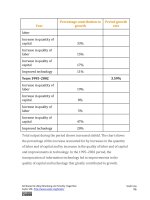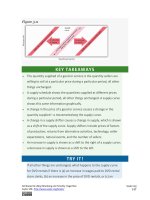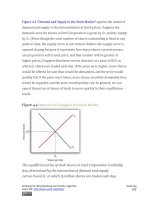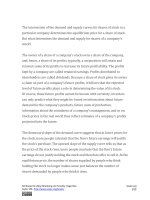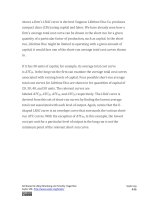Authors libby rittenberg 872
Bạn đang xem bản rút gọn của tài liệu. Xem và tải ngay bản đầy đủ của tài liệu tại đây (415.05 KB, 1 trang )
Those who demand, and are willing to pay the price for, high-quality, safe,
warranted products can do so. But some argue that people who demand
and prefer to pay (presumably) lower prices for lower-quality products
that may have risks associated with their use should also be allowed to
exercise this preference. By increasing the costs of goods, consumer
protection laws may adversely affect the poor, who are forced to purchase
higher-quality products; the rich would presumably buy higher-quality
products in the first place.
To assess whether a particular piece of consumer protection is desirable
requires a careful look at how it stacks up against the marginal decision
rule. The approach of economists is to attempt to determine how the costs
of a particular regulation compare to its benefits.
Economists W. Mark Crain and Thomas D. Hopkins estimated the cost of
consumer protection regulation in 2001 and found that the total cost was
$843 billion, or $7,700 per household in the United States. [3]
Deregulating the Economy
Concern that regulation might sometimes fail to serve the public interest
prompted a push to deregulate some industries, beginning in the late
1970s. In 1978, for example, Congress passed the Airline Deregulation Act,
which removed many of the regulations that had prevented competition in
the airline industry. Safety regulations were not affected. The results of
deregulation included a substantial reduction in airfares, the merger and
consolidation of airlines, and the emergence of frequent flier plans and
other marketing schemes designed to increase passenger miles. Not all the
consequences of deregulation were applauded, however. Many airlines,
Attributed to Libby Rittenberg and Timothy Tregarthen
Saylor URL: />
Saylor.org
872
